First season of CIG-funded On-Farm Trial results show field conditions and environment matter a lot.

Researcher/Professor
University of Connecticut

Results from the first season of 53 on-farm trials conducted throughout the Midwest to test enhanced efficiency fertilizers (EEFs) show mixed results. As we have come to expect from field-scale trials, the real-world conditions farmers face each season greatly impact product performance as compared to tests performed in more controlled small scale or research farm conditions. This is one of the reasons why USDA’s Natural Resources Conservation Service (NRCS) chose to award a Conservation Innovation Grant to Brookside Labs and their Amplify consultant network to conduct such trials. The Amplify consultants have over a decade of experience performing field-scale evaluation trials on working farms in collaboration with their client farmers.
NRCS and project partners want to demonstrate that on-farm trials can be useful for farmers to find out how products perform in their fields or parts of their fields before using them on more acres. Farmers are reluctant to spend money on products without knowing how they will perform, and with good reason. On-farm trials implemented with a few simple protocols can go a long way to measure results that can be tracked across seasons. A second objective of the project is to demonstrate how to conduct on-farm evaluation trials collaboratively within a consultant-farmer network, and a third objective is to promote greater adoption of technologies such as stabilizers that can reduce nitrogen losses from fields.
For farmers to adopt such technologies they need to know whether or not money spent on a stabilizer product will be worth it at the end of the season. We will conduct 3 seasons of at least 50 trials per season in corn using 5 products to help answer this question. The products tested and type of action are listed in the table below.[1]
|
Product/manufacturer |
Type |
Mixed with |
|
Anvol® (Koch) |
Urease inhibitor |
Urea & UAN |
|
Centuro® (Koch) |
Nitrification inhibitor |
UAN & AA |
|
Instinct NXTGEN® (Corteva) |
Nitrification inhibitor |
UAN, AA and liquid manure |
|
N-Serve® (Corteva) |
Nitrification inhibitor |
AA |
|
BD-Ntrust |
Microbial & other compounds |
UAN |
In 2020, each trial included 12 combine-width strips replicated across a relatively uniform part of the field. These strips included 3 replications of the farmer’s normal N rate without the product added, 3 reps of 75% of the farmer’s normal rate with the product added, and 3 reps of the farmer’s normal rate with product added, all randomized to account for field variability and build statistical power. Farmers applied product at sidedress according to their usual custom. The team also collected aerial images of each field during the season as well as corn stalk nitrate tests at the end of the season. Management data from each field were compiled and yields were collected using calibrated yield monitors. Daily rainfall data – the biggest piece of the puzzle when analyzing results from N stabilizer trials – starting 15 days before application of the stabilizers until 45 days after application are still being obtained and are needed to fully evaluate the efficiency of the stabilizers. Preliminary results were provided to the farmers showing the outcomes from their trials based on their cornstalk tests, management data and yields along with summaries of all the trials.
The project science team also conducted additional lengthy data analysis to tease out the economic outcomes across all the trials, looking at averages and also at individual trial results to gauge what types of conditions may have contributed to a products’ success or lack thereof in this first year. After detailed rainfall data from each trial location are obtained, we will conduct and share more detailed analyses.
About 70% of our project fields are located in and around the Western Lake Erie basin (WLEB) of Michigan, Indiana and Ohio, with additional fields in Iowa, Illinois, and Minnesota. Dry conditions across the WLEB fields made it less likely that nitrification inhibitors would provide a benefit since these products inhibit nitrification in wet conditions, and this is more or less what the team found in the data. The slide below provides a quick tutorial on how nitrification inhibitors work to slow the conversion of ammonium to nitrate. When rainfall occurs after N application, a nitrification inhibitor can protect against N losses that might occur due to leaching or denitrification, particularly in high sand or high clay soils.
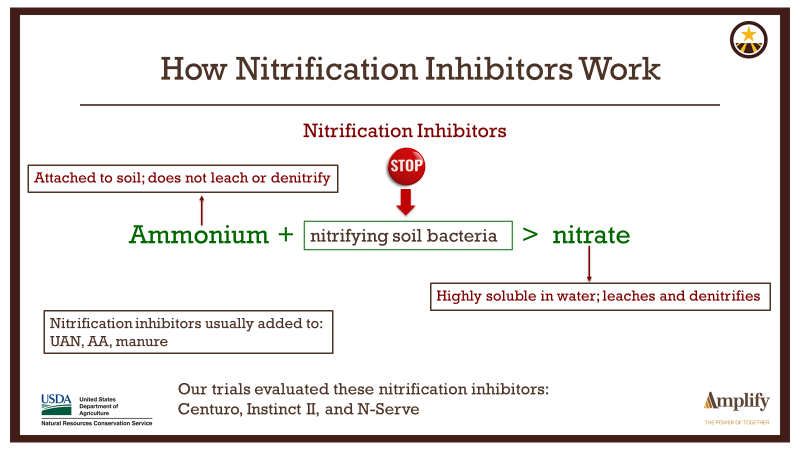
While some of the soils in the trial fields were likely high in clay content, the dry conditions experienced greatly reduced the need for a nitrification inhibitor.
What about Anvol, the urease inhibitor tested? The below slide describes how urease inhibitors work to inhibit losses of N through conversion of the urea to ammonia gas and subsequent volatilization from the soil surface. In general, the longer dry conditions are experienced after N application, the more need for a urease inhibitor as the fertilizer sits on the soil surface.
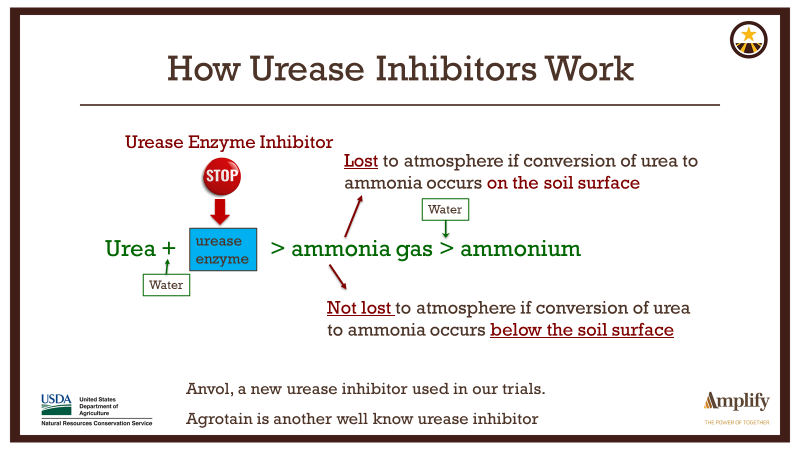
Despite the fact that dry conditions prevailed in 70% of the fields tested (WLEB), most of the fields where the urease inhibitor Anvol was used were located outside of the Western Lake Erie Basin, where rainfall may have been closer to normal. After we finish collecting daily rainfall data at each trial location, we will have a better understanding of whether there was a need for a urease inhibitor. This underscores the importance of using varying locations that will experience different weather patterns to fully test a product.
The slide below shows yield results for all trials by product and treatment. The averages show that in most trials the treatments produced very little difference in yield results except in some of the trials where the farmer rate was reduced to 75% of normal. For most products, there was very little economic benefit as well, with the highest performers being Anvol and BD-NTrust that provided an average benefit of $2.00 per acre when applied at the farmers’ rates.
The team established a $5 per acre gain as the benchmark for economic benefit. Looking at averages is useful for establishing trends, but in looking at some of the individual trial results, the team concluded that the products may have played a bigger role in helping offset losses from lower-yielding environments.
Preliminary conclusions from this first year of trials:
- Pay close attention to the 5-day forecast for rain when deciding to use a urease inhibitor
- Consider soil drainage when choosing to use a nitrification inhibitor
- Nitrification inhibitors are most likely to provide economic benefit on well drained light soils and poorly drained heavy soils
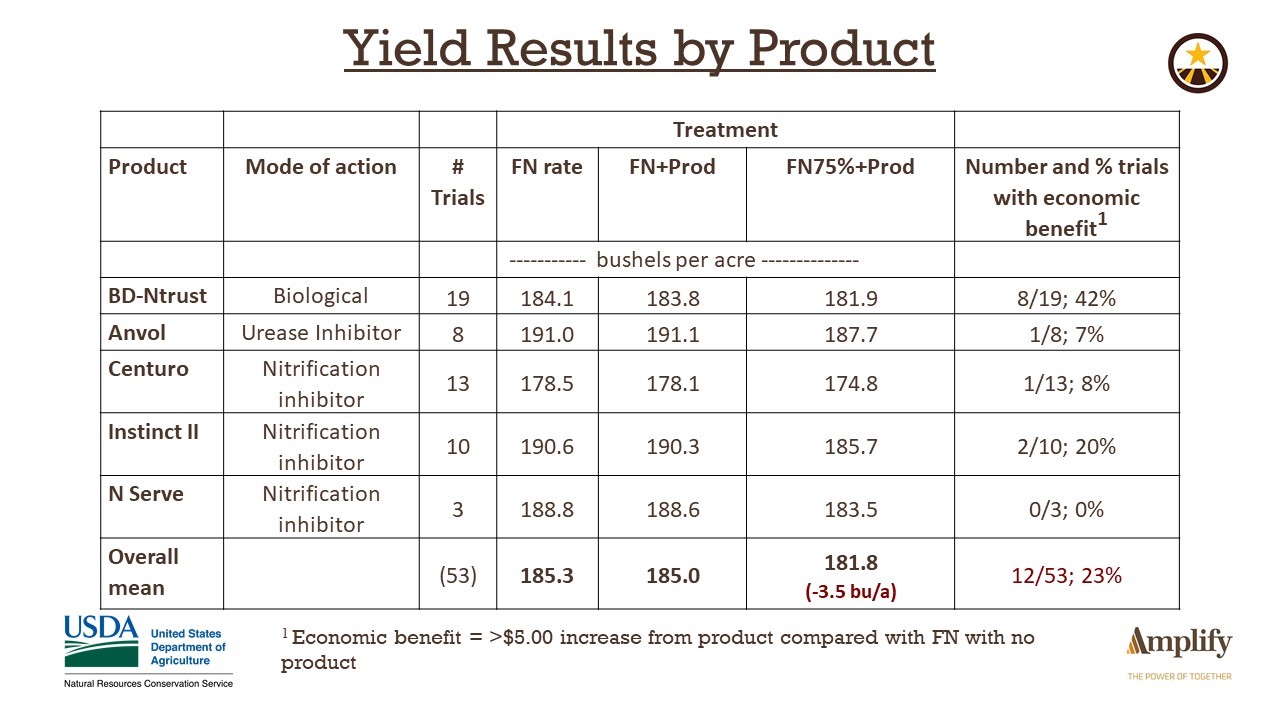
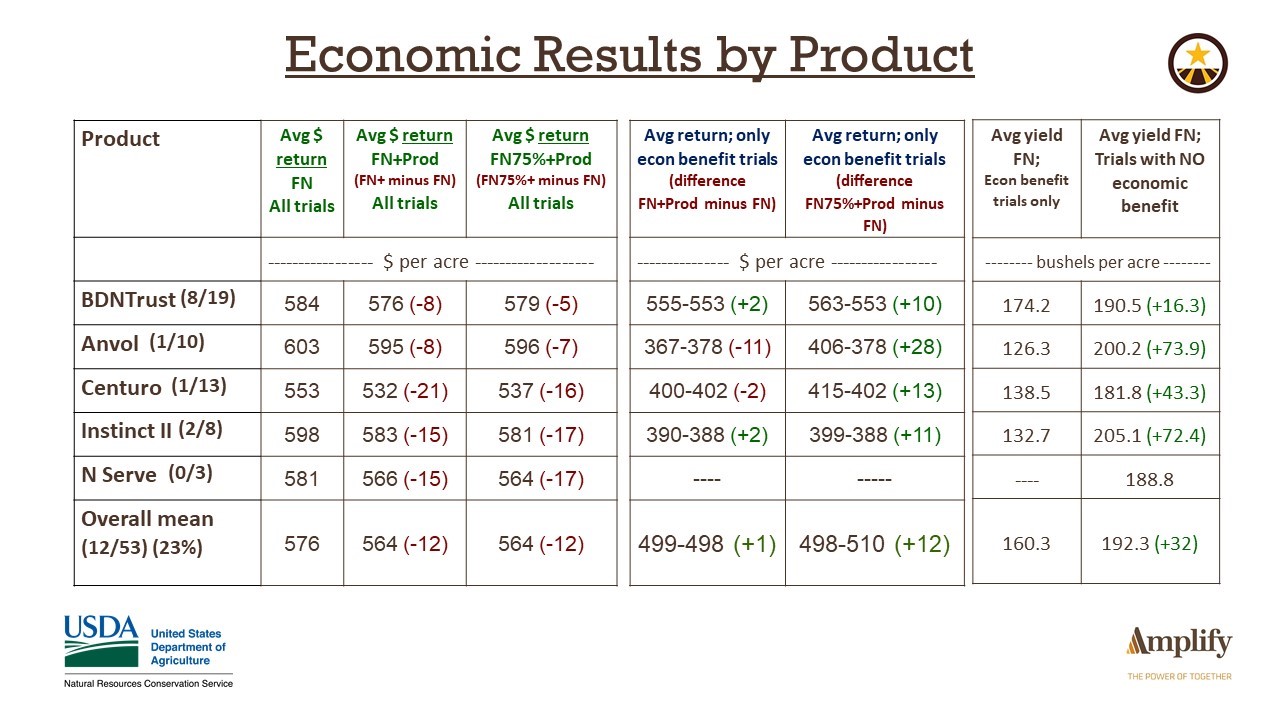

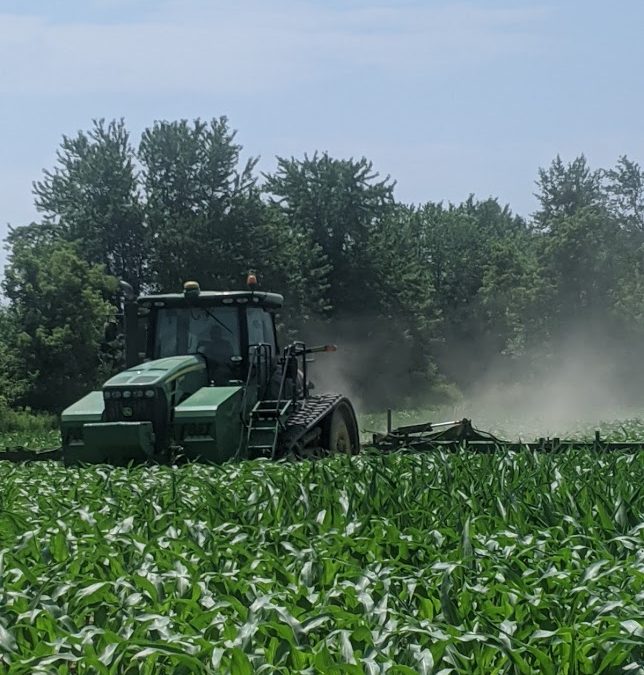
Recent Comments